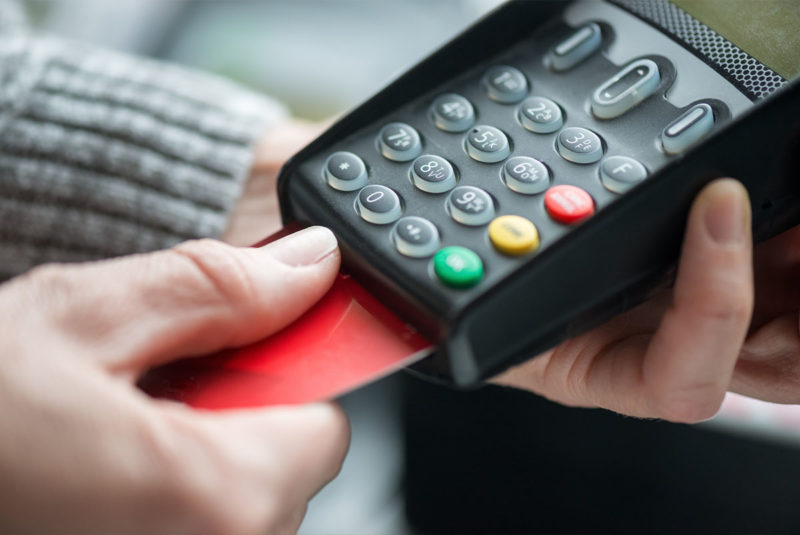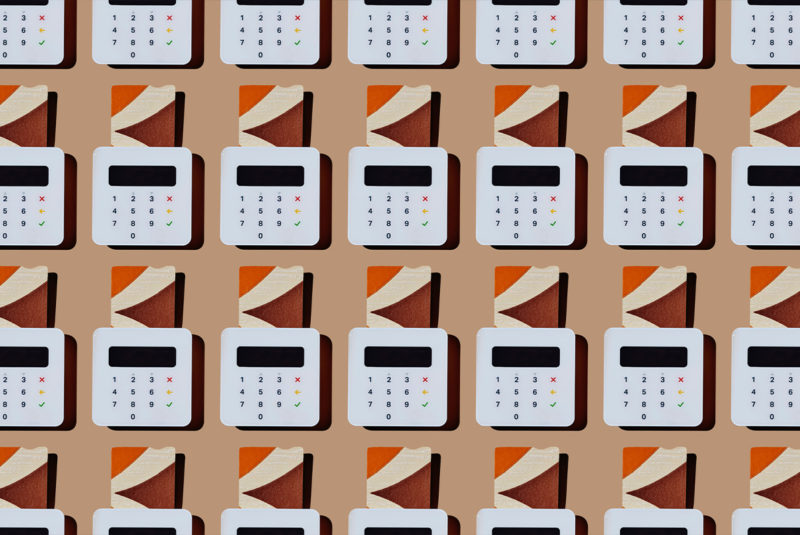If you have a spending problem or are struggling to keep up with payments, tucking away your credit card once it’s paid off may seem like a responsible and reasonable choice. But there are potential consequences to the “out of sight, out of mind” strategy you should be aware of.
Not using a credit card won’t hurt your credit scores, but if a card is closed due to inactivity, it can hurt your credit scores and your credit utilization ratio.
Why You Need To Use Your Credit Cards
There are two primary reasons why you should think about how often you use your credit cards:
- You want to make sure your card isn’t closed due to inactivity.
- You want to make sure you’re getting enough value from the credit cards you are paying to use.
The first reason will apply to every credit card (or charge card). The second reason only applies to credit cards with annual fees.
Most personal finance advice around credit card use focuses on inactivity. But if any of your cards have annual fees, it’s just as important to make sure you’re getting enough value from them to justify their cost.
We’ll go over what you need to know to avoid having your cards closed for inactivity (also known as dormancy). And we’ll explore strategies to offset a card’s annual fee and ensure you’re getting your money’s worth from the piece of plastic in your wallet.
When you visit MoneyTips, we want you to know that you can trust what’s in front of you. We are an authoritative source of accurate and relevant financial guidance. When MoneyTips content contains a link to partner or sponsor affiliated content, we’ll clearly indicate where that happens. Any opinions, analyses, reviews or recommendations expressed in our content are of the author alone, and have not been reviewed, approved or otherwise endorsed by the advertiser.
We make every effort to provide up-to-date information; however, we do not guarantee the accuracy of the information presented. Consumers should verify terms and conditions with the institution providing the products. Some articles may contain sponsored content, content about affiliated entities or content about clients in the network. While reasonable efforts are made to maintain accurate information, the information is presented without warranty.
FAQ on Credit Card Inactivity
Is your credit card only on standby for potential emergencies? While the strategy certainly offers some peace of mind, if you had one emergency a year, you might risk your card issuer closing your account for infrequent use. A closed credit card account can hurt your credit scores – and potentially leave you without a card when you need it most.
How often should I use my credit cards to keep them active?
There is no universal minimum, but experts recommend using your cards at least once every 6 months. If you want to play it safe, use them at least once every 3 months, especially if the cards are store credit cards.
Every credit card issuer is different. Some issuers cancel a card after a few months of inactivity, while others take years. No industry standard dictates how long an inactive account can remain open. Card issuers may treat individual cardholders differently, depending on the card they have, their credit history and their credit profile.
You don’t have to spend a lot of money to keep your cards open. Use each card for at least one small purchase. Treat a friend to lunch, treat yourself to dinner or buy extra paper towels. Any purchase will do.
There isn’t a lot of good data that tells us when card issuers cancel cards for inactivity. It also doesn’t help that card issuers can change their policies at any time and may treat each card they offer differently. But here are some helpful strategies to keep your cards active:
- Rotate card usage: You can use a different credit card each month. Make a small purchase you can pay off in full by the end of each billing cycle to avoid interest and mounting debt.
- Create calendar reminders: Set up monthly reminders to switch out your credit cards. Set reminders or alarms to use specific cards on specific dates. Use a digital calendar, a wall calendar or a paper scheduler – whatever it takes to keep you on schedule.
- Use a credit card organizer: While this advice indirectly relates to keeping your cards active, it directly relates to the strategy described in the previous bullet. Use a credit card organizer to keep all your cards in order and in one easy-to-access place.
- Set up a system you won’t have to think about: Use your cards to pay your recurring bills, like your streaming services or cellphone. Setting up autopay for the entire balance will ensure your bills are paid off on time.
- Add all your credit cards to your Amazon account: If you shop on Amazon, you can use your credit cards to periodically reload your account with deposits as small as 50 cents. Check with your credit card issuer before you attempt this strategy. Some issuers cancel minimal charges that are less than a dollar.
If only one of your credit cards is no longer in regular rotation, don’t put it away and stop thinking about it. You’ll need to use it occasionally to prevent it from being closed for inactivity.
Can I use my credit card too much?
As long as you don’t go over your credit limit, you are not overusing your card. Every time you use your credit card and pay it off in full, you demonstrate solid money management skills. But it is possible to misuse your credit card or underuse it.
Here are three credit card habits you’ll want to avoid:
Credit Card Habits To Avoid
Interest accumulates when you only pay your credit card minimum and carry a balance. High balances on multiple credit cards can quickly become unaffordable. And if the debt becomes unmanageable, it might require credit repair in the future. Pay more than the minimum on your credit card. Reaching that goal will likely mean only buying what you can afford to pay off at the end of the month.
Stay within or below 30% of your overall credit utilization ratio to avoid hurting your credit scores.
Even if you pay your balance off at the end of each billing cycle, maxing out your credit card is a potential red flag to credit card companies who may view your overspending as risky.
If you decide to use a credit card a few times a month, you can pay a portion of your bill in the middle of the billing cycle and then pay the rest of your balance at the end of the billing cycle.
What happens if I don’t use my credit card?
Depending on your overall credit card debt and credit history, losing a credit account could impact your credit scores. Besides being closed for inactivity, there are other risks to consider:
- Rewards expire: The points and cash back you get from most reward cards typically do not expire. But with some cards, like certain travel rewards and store cards, rewards expire after a specified period of inactivity.
- Fraudulent activity goes unnoticed: If you never check your card statement, you might miss signs of fraudulent activity. If autopay is turned on, you might even pay for a fraudulent charge without realizing it.
If your card is closed due to inactivity, there are other considerations to take into account, including:
- Potential embarrassment: It might feel uncomfortable to have your card declined, especially in a social situation like a first date or on a long drink line at a music festival.
- Loss of rewards and benefits: When a card is closed, you’ll lose any rewards you earned, like points, miles or cash back. If you were planning to use a card benefit for an upcoming purchase or experience, like first-class airport lounge access, you’d be out of luck.
- Drop in credit scores: When your account is closed, it changes your credit utilization ratio and the average age of your open credit card accounts. It will appear in your credit history and cause your credit scores to go down.
These scenarios may or may not be a problem for some of us. But if you had hundreds of dollars saved up in points or were planning a luxurious vacation with the help of your travel perks, this could be devastating.
Paying off your balance
You may have heard that carrying debt on your credit card and paying the minimum balance each month will help build your credit scores – but that is not true. Besides accruing interest, carrying a balance will inch you closer to your credit utilization max.
If you want to boost your credit scores, use your card to make small purchases you can comfortably afford to repay in full every month.
Do credit card issuers need to notify me before closing my cards for inactivity?
The CARD Act of 2009 requires notice of account changes, but there is no legal requirement to inform you that your account will be closed due to inactivity.[1]
A closed credit card account in positive standing (no late payments) will stay on your credit reports for 10 years. In some ways, you can continue to benefit from the closed card account. If your account was delinquent and it was closed, the account (and your history of delinquencies) will stay on your credit reports for up to 7 years.
A closed account can affect your credit in several ways:
- Credit utilization ratio may increase: Losing a card account’s credit limit can cause your overall credit utilization to climb quickly because you have less available credit.
- Average age of accounts goes down: Depending on the ages of your other credit accounts, your average credit account age may eventually drop.
- Number of accounts goes down: Eventually, you’ll have one less account on your credit reports. This may not have a significant impact unless you don’t have many accounts.
- Variety of credit may decrease: Depending on the types of credit you use, a closed credit card could change your credit mix, which may have a small negative impact on your credit scores.
A canceled card will harm your credit utilization rate the most and the quickest.
Credit utilization is one of the largest factors used to calculate your credit scores (like your FICO® Scores). Lower utilization is generally better. Experts typically recommend staying below 10% of total utilization to keep your credit scores in top shape. If your total utilization tops 30%, you’re moving into the danger zone, and it may begin to hurt your credit scores.
Other consequences, such as reducing credit age, will take 10 years to happen. Depending on your credit profile, the consequences may be more or less significant, and you’ll have 10 years to lessen their impact by improving your credit.
Let’s see how credit utilization works in real life. Imagine owning three credit cards:
- Card A has a balance of $2,000 and a credit limit of $6,000
- Card B has a balance of $2,000 and a credit limit of $6,000
- Card C has a $0 balance and a credit limit of $8,000
Your cards will add up to a total balance of $4,000 and a total credit limit of $20,000.
If Card C is closed for inactivity, its credit limit will no longer count toward your credit utilization. Without Card C, your credit limit will drop to $12,000.
If your balance stays at $4,000, your credit utilization will jump to 33.33%, which will likely cause your credit scores to drop. If you have extra cash on hand, you can quickly fix the jump in credit utilization by paying down the balance on both Card A and Card B.
Why do card issuers close cards for inactivity?
Credit card inactivity can be a problem for issuers because they are not making any money on the account. If your dormant account is costing your card issuer money, there is no reason for them to keep your account open.
Card issuers make a lot of money in these three ways:
- Swipe fees: Swipe fees (also known as processing fees) are a small percentage of each credit card transaction paid by merchants.
- Interest payments: When you carry a balance on your account, you are charged interest according to your interest rate.
- Annual fees: Yearly fees card issuers charge and receive whether you use the card or not.
If you have a card collecting dust somewhere, it’s not generating swipe fees or interest for the card issuer. And if the card has no annual fee, there’s no way for your issuer to make money on the account.
Closing the account would be in your card issuer’s best interest because it’s costing them money to keep it open. And there is no shortage of customers who need credit and would use it.
Credit card companies used to charge inactivity fees after a set period of inactivity, but the CARD Act of 2009 made this practice illegal.[1] The rule change benefitted cardholders but incentivized card issuers to close inactive accounts.
Offsetting Credit Card Annual Fees
If you’re paying an annual fee for a credit card, try to get your money’s worth by using it. If the card isn’t providing more value than the cost of the annual fee, all it’s doing is draining your bank account.
There are three basic ways to extract value from a credit card with an annual fee:
- Rewards: You can earn rewards for making purchases, and you may get introductory bonus offers.
- Benefits: Take advantage of travel perks, shopping credits and discounts, access to presale and preferred tickets, etc.
- Credit building/rebuilding: If you have bad credit, maybe you were only eligible for cards with annual fees. If that’s a yes, make the most of your card by using it to establish a positive payment history and improve your credit scores.
If you’re not getting enough value from a card with an annual fee, you may want to consider closing that card.
Get Comfortable Using Your Credit Card Responsibly
There is no right or wrong answer to how often you should use your credit cards. If you want to play it safe, use your cards every 3 months, especially any retail cards.
Create a system to keep track of your credit cards and your credit card use. Staying organized can help prevent any nasty surprises, reducing the possibility of using a card only to discover that it’s been canceled.
For cards with annual fees, make sure their value outweighs the fees. Extract value from rewards or introductory bonuses. Many of the best credit cards offer benefits that offset annual fees and provide value beyond their cost.
If you have a credit card with an annual fee because your credit scores are at the lower end of the spectrum, look at the annual fee as a short-term investment into your newly improved or more robust credit history.
In short, use it, or you could lose it!
The Short Version
- Not using a credit card won’t hurt your credit scores, but if a card is closed due to inactivity, it can hurt your credit scores and your credit utilization ratio
- You don’t have to spend a lot of money to keep your cards open. Use each card for at least one small purchase
- The CARD Act of 2009 requires notice of account changes, but there is no legal requirement to inform you that your account will be closed due to inactivity[1]
Government Publishing Office. “Credit CARD Act of 2009.” Retrieved June 2022 from http://uscode.house.gov/statutes/pl/111/24.pdf




